 |
 |
 |
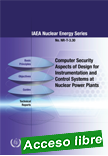 |
Computer Security Aspects of Design for Instrumentation and Control Systems at Nuclear Power Plants
English ¦ STI/PUB/1870 ¦ 57 pages ¦ Date published: 2020
The transition to digital technology has changed the nature of instrumentation and control (l&C) systems by enabling extensive interconnection of reprogrammable, functionally interdependent I&C systems. This development has made computer security a necessary element for consideration in I&C system design. The benefits and challenges of the various computer security methods and controls with their implementation in nuclear power plant I&C systems are discussed and described in this publication.
|
The publication provides an overview of current knowledge, up to date good practices, experience, and benefits and challenges related to the application of computer security measures. The publication defines the key concepts for computer security for I&C systems at nuclear facilities, explains the risk informed approach to computer security and describes how computer security measures are applied throughout the l&C system life cycle. Situations where I&C systems are interconnected with enterprise management systems are also addressed. The three appendices present case studies with practical application examples.
|
 |
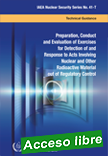 |
Preparation, Conduct and Evaluation of Exercises for Detection of and Response to Acts Involving Nuclear and Other Radioactive Material out of Regulatory Control
IAEA Nuclear Security Series No. 41-T ¦ English ¦ STI/PUB/1877 ¦ 94 pages ¦ Date published: 2020
This publication presents detailed concepts and procedures for the preparation, conduct and evaluation of exercises to test relevant nuclear security systems and measures, and provides useful templates and checklists that can be used to assist the exercise development process.
|
The technical guidance provided is targeted at States and their competent authorities to assist them in establishing and sustaining an effective infrastructure to strengthen detection of and response to material out of regulatory control and evaluate the effectiveness of their plans by presenting a structured methodology for the consistent development of exercises.
|
 |
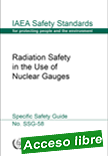 |
Radiation Safety in the Use of Nuclear Gauges
IAEA Safety Standards Series No. SSG-58 ¦ English ¦ STI/PUB/1881 ¦ 97 pages ¦ Date published: 2020
There are several hundred thousand nuclear gauges incorporating a radioactive source or a radiation generator in use all over the world. They have been used in a wide range of industries to improve the quality of products, optimize processes, and save energy and materials. The economic benefits have been amply demonstrated, and there is clear evidence that nuclear gauge technology can be used safely and will continue to play an important role.
|
Although generic guidance for source handling is available, there have been no targeted recommendations for radiation safety in the use of nuclear gauges. To fill this gap the current publication provides practical guidance for implementing the safety requirements specified in IAEA Safety Standards Series No. GSR Part 3, Radiation Protection and Safety of Radiation Sources: International Basic Safety Standards, related to the use of nuclear gauges.
|
 |
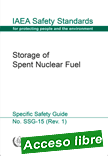 |
Storage of Spent Nuclear Fuel
IAEA Safety Standards Series No. SSG-15 (Rev. 1)
English ¦ STI/PUB/1882 ¦ 107 pages ¦ Date published: 2020
This publication is a revision by amendment of IAEA Safety Standards Series No. SSG-15 and provides recommendations and guidance on the storage of spent nuclear fuel. It covers all types of storage facility and all types of spent fuel from nuclear power plants and research reactors. It takes into consideration the longer storage periods beyond the original design lifetime of the storage facility that have become necessary owing to delays in the development of disposal facilities and the reduction in reprocessing activities.
|
It also considers developments associated with nuclear fuel, such as higher enrichment, mixed oxide fuels and higher burnup. Guidance is provided on all stages in the lifetime of a spent fuel storage facility, from planning through siting and design to operation and decommissioning. The revision was undertaken by amending, adding and/or deleting specific paragraphs addressing recommendations and findings from studying the accident at the Fukushima Daiichi nuclear power plant in Japan.
|
 |
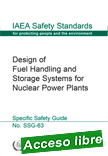 |
Design of Fuel Handling and Storage Systems for Nuclear Power Plants
IAEA Safety Standards Series No. SSG-63
English ¦ STI/PUB/1897 ¦ 53 pages ¦ Date published: 2020
This Safety Guide provides recommendations on how to meet the requirements of IAEA Safety Standards Series No. SSR-2/1 (Rev. 1), Safety of Nuclear Power Plants: Design, in relation to fuel handling and storage systems. The publication addresses the design aspects of handling and storage systems for fuel that remain part of the operational activities of a nuclear reactor.
|
It covers the following stages of fuel handling and storage in a nuclear power plant: receipt, storage and inspection of fresh fuel before use and transfer of fresh fuel into the reactor; removal of irradiated fuel from the reactor and transfer of the irradiated fuel to the spent fuel pool; and reinsertion of irradiated fuel from the spent fuel pool into the reactor. Recommendations are also provided on the storage, inspection and repair of irradiated or spent fuel in the spent fuel pool, and the preparation for the removal of this fuel from the spent fuel pool and on the handling of fuel casks in the spent fuel pool and on their transfer.
|
 |
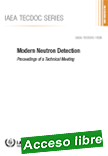 |
Modern Neutron Detection - Proceedings of a Technical Meeting
English ¦ IAEA-TECDOC-1935 ¦ 360 pages ¦ Date published: 2020
This publication presents the outcome of a technical meeting on modern neutron detection. The objective of the meeting was to bring together experience and opinions from experts from various fields in which neutron detection is used, and to produce this publication that will cover the current state of the art in neutron detection and provide a medium-term outlook on technologies in the field.
|
The scope of this publication covers new materials and detector electronics, in fields such as metrology, dosimetry, spectroscopy, fusion and scattering applications. It offers an overview of many of the current developments in this wide field, together with a description of some of the front-end electronics and spectral unfolding techniques.
|
 |
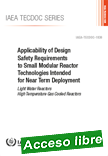 |
Applicability of Design Safety Requirements to Small Modular Reactor Technologies Intended for Near Term Deployment
Light Water Reactors High Temperature Gas Cooled Reactors
English ¦ IAEA-TECDOC-1936 ¦ 154 pages ¦ Date published: 2020
IAEA Member States have expressed relevant interest in the development and deployment of small and medium-sized or modular reactors (SMRs) to help cover their energy needs in the coming decades. SMR designs may include technological characteristics that differ significantly from those of the large nuclear power plants that are commercially available.
|
Those SMR characteristics can represent a challenge when the existing design requirements, as established in IAEA Safety Standards Series No. SSR-2/1 (Rev. 1) Safety of Nuclear Power Plants: Design, are intended to be applied to SMRs. This publication focuses on the engineering judgement necessary to apply each of the design requirements in SSR-2/1 (Rev. 1), and also the entire set of requirements, to light water cooled and high temperature gas cooled SMRs. The publication includes the common ground reached by representatives from regulatory bodies, technical and scientific support organizations (TSOs) and SMR design organizations regarding the applicability of the design requirements to both SMR technologies. The insights provided are also intended to contribute to motivating further progress in the harmonization of national and international views on safety approaches for SMR technologies. This publication is intended for use by organizations dealing with nuclear power plant design or operation, and by regulatory bodies and TSOs, particularly from countries that are initiating or enlarging nuclear power programmes that include SMR units.
|
 |
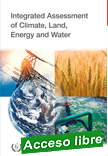 |
Integrated Assessment of Climate, Land, Energy and Water
English ¦ STI/PUB/1910 ¦ 76 pages ¦ Date published: 2020
This publication presents the findings of an IAEA Coordinated Research Project (CRP) on the development and application of the integrated climate, land, energy and water (CLEW) framework. Together with other UN partners, the IAEA has developed this framework in response to global challenges such as ensuring universal access to food, energy and water, to achieve UN Sustainable Development Goals.
|
The publication reflects the objectives of the CRP to expand and improve the knowledge base, tools and toolkits available for integrated assessment of climate, land, energy and water, as well as demonstrate the applicability of these tools in different countries facing diverse challenges. The research results help to identify practical strategies and policies for coherent development and management of land, water and energy resources, and responses to climate change.
|
 |
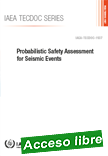 |
Probabilistic Safety Assessment for Seismic Events
English ¦ IAEA-TECDOC-1937 ¦ 106 pages ¦ Date published: 2020
Probabilistic safety assessment (PSA) is considered to be an important tool for assessing the safety of nuclear installations (typically used for safety assessment of nuclear power plants) in relation to potential initiating events that can be caused by random component failure and human error, as well as internal and external hazards. The purpose of seismic PSAs performed on nuclear installations is to provide risk insights related to their seismic robustness.
|
The methodology for seismic safety evaluations includes a combination of deterministic and probabilistic approaches. Their applications typically address the impact of beyond design basis seismic events. This publication provides a detailed methodology for seismic PSA in line with the current international practices for seismic safety assessment of nuclear installations. Taking into account recommendations provided in IAEA safety standards and information reflected in internationally recognized technical standards, it reflects the current state of practice in the area of seismic PSA.
|
 |
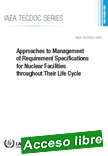 |
Approaches to Management of Requirement Specifications for Nuclear Facilities throughout Their Life Cycle Deployment
English ¦ IAEA-TECDOC-1933 ¦ 90 pages ¦ Date published: 2020
The design and operational requirements of nuclear facilities, such as nuclear power plants (NPPs), are specified and managed to ensure the safety and optimized operation of the facility. These requirements and how they are managed, interpreted and used to support facility functions and activities, are very important in all the life cycle phases of the facility from design through construction, commissioning, operation, and from refurbishment to decommissioning.
|
This publication analyses and provides new insights into the different approaches followed by the nuclear industry for their effective management as well as guidance to develop a comprehensive requirement management programme in nuclear facilities. Although the guidance provided is based on industry experience to develop such programmes for NPPs, the principles and approaches provided can be used in all nuclear facilities including research reactors, fuel manufacturing facilities, fuel reprocessing and waste management facilities.
|
 |
| |
|
|

|
|
|
| |
|
|
| |
| |
|
|
| |
| |
|
|
| |
| |
|
|
|
| |
| |
